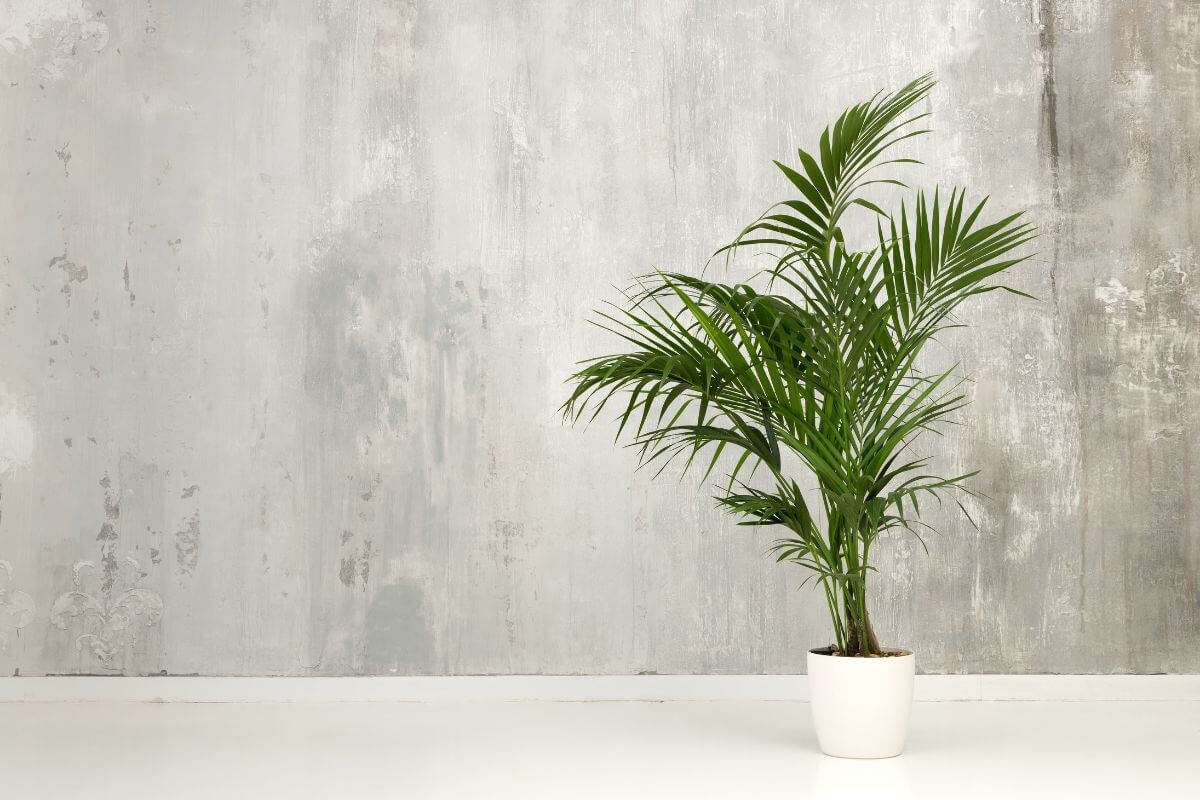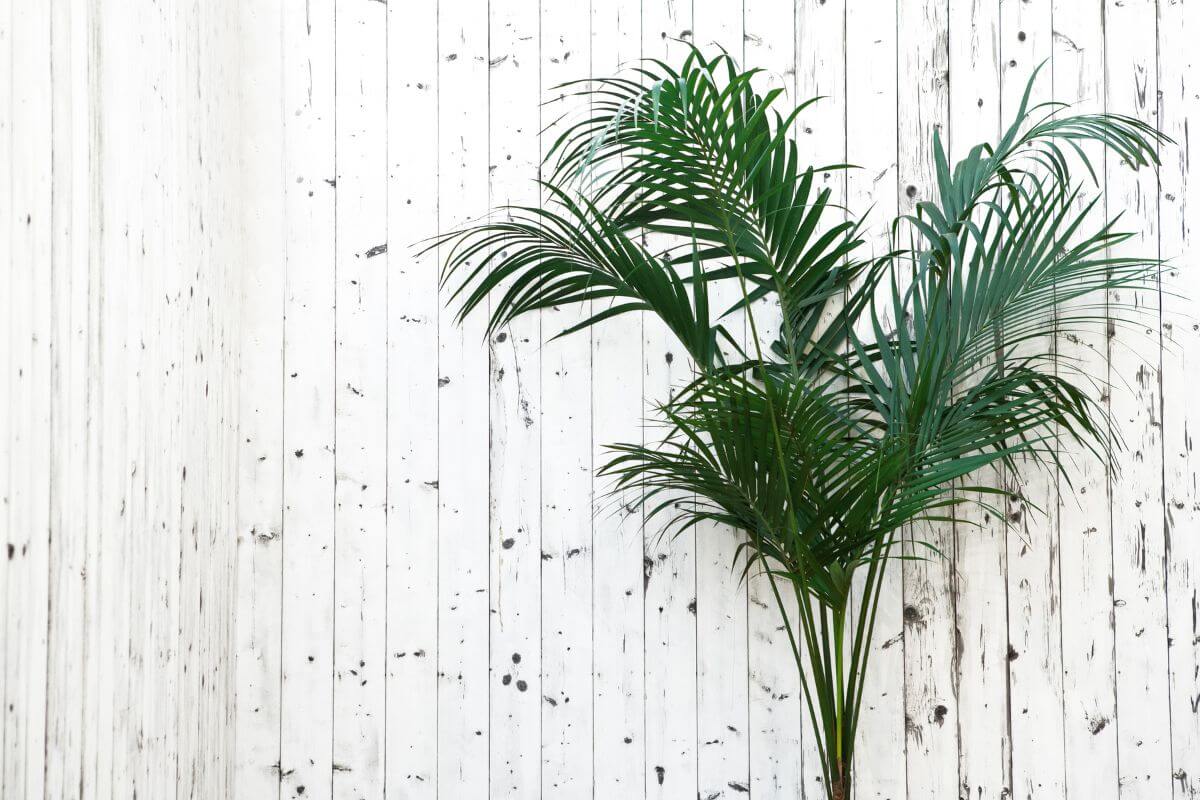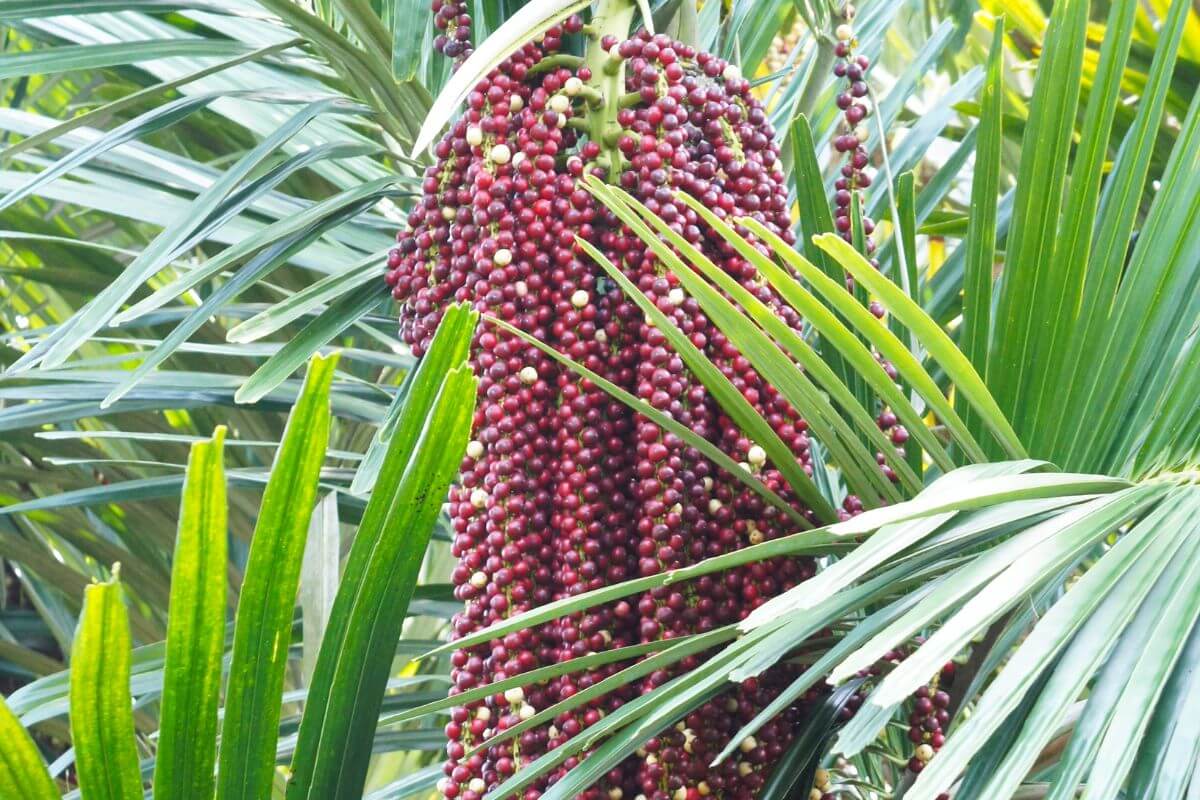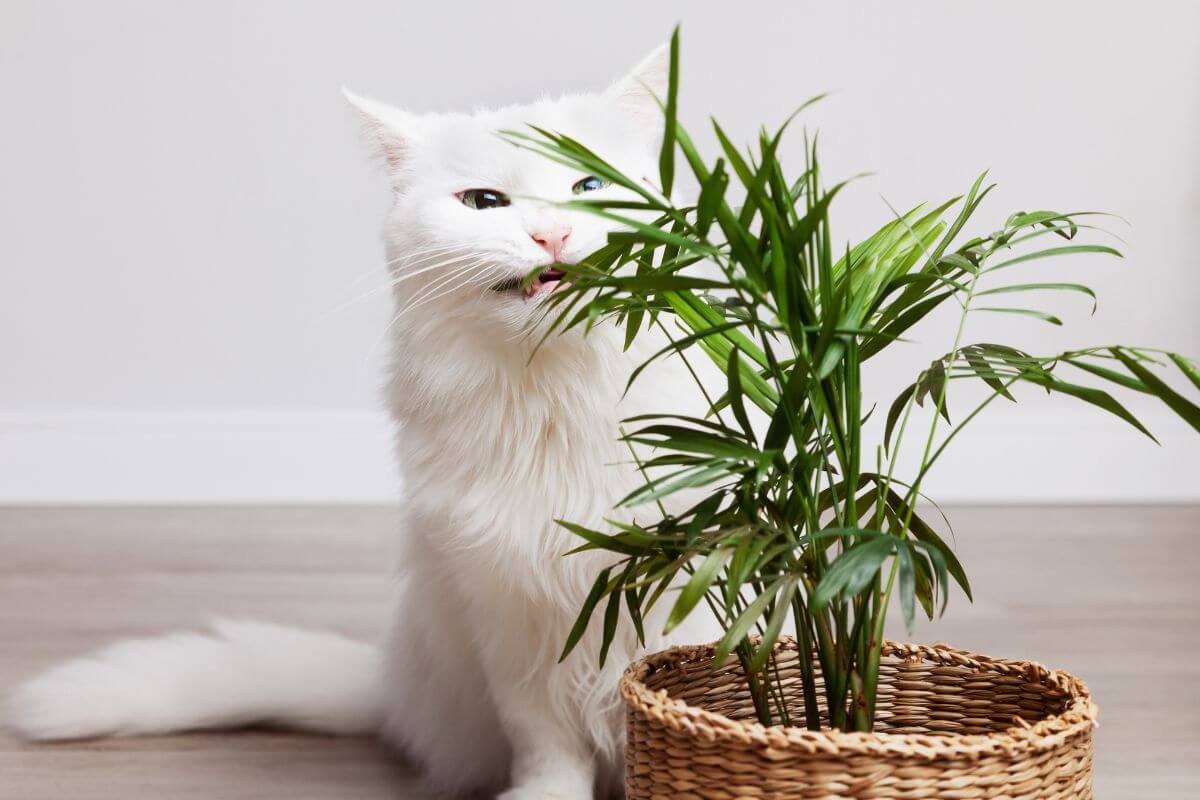Give your home a bright tropical flair with the Kentia Palm. It is a must for a little summer flavor in any room, regardless of the temperature outdoors.
Learn how to grow them and care for the kentia palms in this guide.
Kentia Palm Tree Overview

Also known as the “Sentry Palm”, “Thatch Palm”, or “Paradise Palm”, the kentia palm’s botanical name is Howea forsteriana. It is one of the most popular palm plants cultivated indoors.
A member of the Arecaceae family, it hails from Lord Howe Island near Australia but is now found in homes and businesses globally.
Extraordinarily adaptable and hardy, the kentia palm can thrive in warm or colder temperatures, as well as in bright light or partial shade.
Its stature is impressive, to say the least as it can reach up to ten feet tall indoors and an impressive forty feet outdoors. Even though it is a slow grower, they can grow quite large.
This is a palm that will require space, so give it some legroom to show off its statuesque height and stunning foliage.
Ideal for interior decoration, kentia palms are often found in commercial settings. This dates back to when historically famous hotels like the London Ritz or the New York Plaza created palm courts within the hotels for guests to enjoy.
It may appear to have multiple stems, but this is actually several kentia palms planted together in a group to give it a fuller look.
The two most common varieties of the kentia palm are the Howea forsteriana and the Howea belmoreana. They can be told apart because the belmoreana will feature smaller leaves that grow upward with an erect posture, whereas the forsteriana will boast leaflets that droop and arch downward.
Feather-shaped fronds are a shade of deep green, while trunks begin green but will turn brown as they mature. Each frond will feature approximately 90 leaflets that bend gracefully.
Kentia Palm Care Guide
Environment for the Kentia Palm
The kentia can be cultivated outdoors in USDA hardy zones 9b through 11. It is a hardy palm that will thrive as an indoor plant despite the low light, dust, heating, and even drought when owners forget to water.
This palm plant can tolerate temperatures as low as 25° and as high as 100° Fahrenheit, but the 65° to 85°F range is ideal.
Soil for the Kentia Palm
The kentia palm also adapts to various kinds of soil and growing mediums, including acidic, loam, clay, and even alkaline.
If you already have a supply of potting soil on hand, go ahead and use it, but mix in one part of horticultural sand for drainage purposes with one part of potting soil.
You can also use a peat, sand, and potting mix blend in equal parts.
Whichever medium you use, make sure that it is well-draining and that the pot has an adequate number of drainage holes.
Light for the Kentia Palm

The kentia palm will thrive in bright, indirect sunlight. Direct sunlight exposure places younger palms at risk of scorched fronds.This palm will be able to tolerate direct full sunlight after five years of age on up.
This is a plant, that can also adapt to low-light conditions and still do well. With less light, growth will be slower, and there may be fewer fronds than if kept in bright indirect light.
Water and Humidity for the Kentia Palm
As a rule, the kentia palm will need moderate watering weekly because it prefers a moist soil bed. Much will depend on the environmental temperature though as to how often to water.
It is a good rule of thumb to water when the top two inches of the soil bed feels dry. With excessive watering, these palms are at risk of root rot, so good drainage and light watering are essential.
During the winter months, reduce watering and mist your palm weekly. This will help to remove dust buildup on the fronds and increase the humidity level a bit.
You can also place your palm pot on a pebble tray if the air is particularly dry to compensate for humidity needs.
Feeding the Kentia Palm
The kentia palm does not require a lot in terms of fertilization. Using palm fertilizer twice yearly during the plant’s growing season should be enough.
A fertilizer that has a continuous release formula is ideal. Do not overfeed your palm as this can damage the plant and cause the fronds to turn brown.
Like many palms, the kentia can suffer from a potassium deficiency, so a slow-release potassium supplement for palms is a good solution.
Potting and Pruning the Kentia Palm
Repotting your kentia palm should only be necessary if the palm outgrows its pot or has consumed all the nutrients in its soil bed.
The kentia root system is delicate, so it needs to be handled gently if you must repot it.
Do keep in mind, that as your kentia matures and grows, it may become top-heavy, so you may need to move it to a larger, heavier container to prevent it from falling over one day.
Pruning should be done only to remove dead or dry brown fronds. If you prune healthy fronds, that may lead to trunk damage.
Propagating the Kentia Palm
The kentia palm is propagated using seeds. Palm seeds should be planted in a sandy soil bed during the spring or summer months.
They should be kept in a location with an environmental temperature of 65° to 75° F and in filtered low light or shade. Never leave seeds to germinate in the dark.
Germination will take about one to three months.
Kentia Palm Blooms and Fruit

The kentia can produce blooms, and when taking into account the stems, stalks, bracts, and flowers together, they can measure three to four feet in length.
Flowering takes place between November and December. Each inflorescence can produce 3 to 7 creamy white flowers on spike pedestals. These inflorescences will host both male and female blooms.
The kentia does produce fruit, although it may take well over a dozen years. The fruit is reddish-brown and oval-shaped.
Kentia Palm Toxicity and Pets

The American Society for the Prevention of Cruelty to Animals (ASPCA) reports that the kentia palm is non-toxic to both dogs and cats.
Kentia Palm Pests, Diseases, and Problems
Palms are not overly susceptible to pest infestations. However, if you overwater or underwater your kentia, you may be creating the conditions for a pest invasion.
Mealybugs and mites are particularly fond of indoor palm trees and houseplants. Should you notice evidence of these scale insects, treat your palm immediately with an organic pesticide like insecticidal soap or neem oil. You can also try spraying your palm with soapy dishwater twice daily.
Yellow leaf tips that eventually turn brown indicate that the palm is not receiving adequate water, while yellow leaves that turn brown may indicate overwatering.
Fronds should be wiped down occasionally with a damp cloth to remove dust buildup.
Kentia Palm Tree Care Final Thoughts
The kentia palm tree is easy to care for and maintain with these tips. Its feathery leaves are great ways to give your home that tropical feel.
It’s important to remember that the kentia is sensitive to cold temperatures, so make sure to provide protection against winter weather.
Check out more of these care and growing guides for other popular houseplants and palms:
Kentia Palm Care FAQs
How much light does a kentia palm need?
The kentia palm will thrive in bright indirect light. They do well in partial sunlight as long as there is no direct exposure to harsh rays. It will even tolerate low-light levels, but the tropical palm will grow slower.
Why are kentia palms so expensive?
Kentai palms are expensive because they are slow growers, and it takes time and effort to grow them to a point when they can be sold. Propagation is a laborious process as it is done from seed.
What kind of soil should I use for my kentia palm?
For the kentia palm, you should choose a potting mix made from peat moss, perlite, vermiculite, sand, and composted pine bark. This mixture provides drainage and holds moisture well.
How do you care for kentia palms?
Proper care for the kentia palm includes keeping the soil moist, providing good air circulation around the plant, and avoiding overwatering. Give it plenty of natural light to replicate its native tropical regions.
Can kentia palms take full sun?
Yes, kentia palms can withstand some direct sunlight without any problems. If you have a large area where you want to place this palm, then go ahead and give it the sunshine it needs. But if it’s out in direct sun for too long, you’ll notice the leaves browning. Make sure that it does get enough partial shade as well, similar to its natural conditions in the tropics.
Is the kentia palm poisonous to humans?
No, the kentia palm is not poisonous to humans or pets. So if you have cats, dogs, and small children, you don’t need to worry.
Can you overwater a kentia palm?
Yes, you can overwater a kentia palm that could lead to root rot. The best way to keep your kentia palm healthy is by giving it ample amounts of fresh water, while allowing the water to fully drain. Then let the top couple inches of soil dry before adding more water. Otherwise, it would lead to the plant being overwatered.


